Diplocarpon rosae
If you want to see a rose gardener cry, all you have to do is say these two words: black spot.
Sooner or later, it seems like everyone who raises roses will encounter this exasperating disease. It’s not just unattractive, it can reduce the health and vigor of your plant.
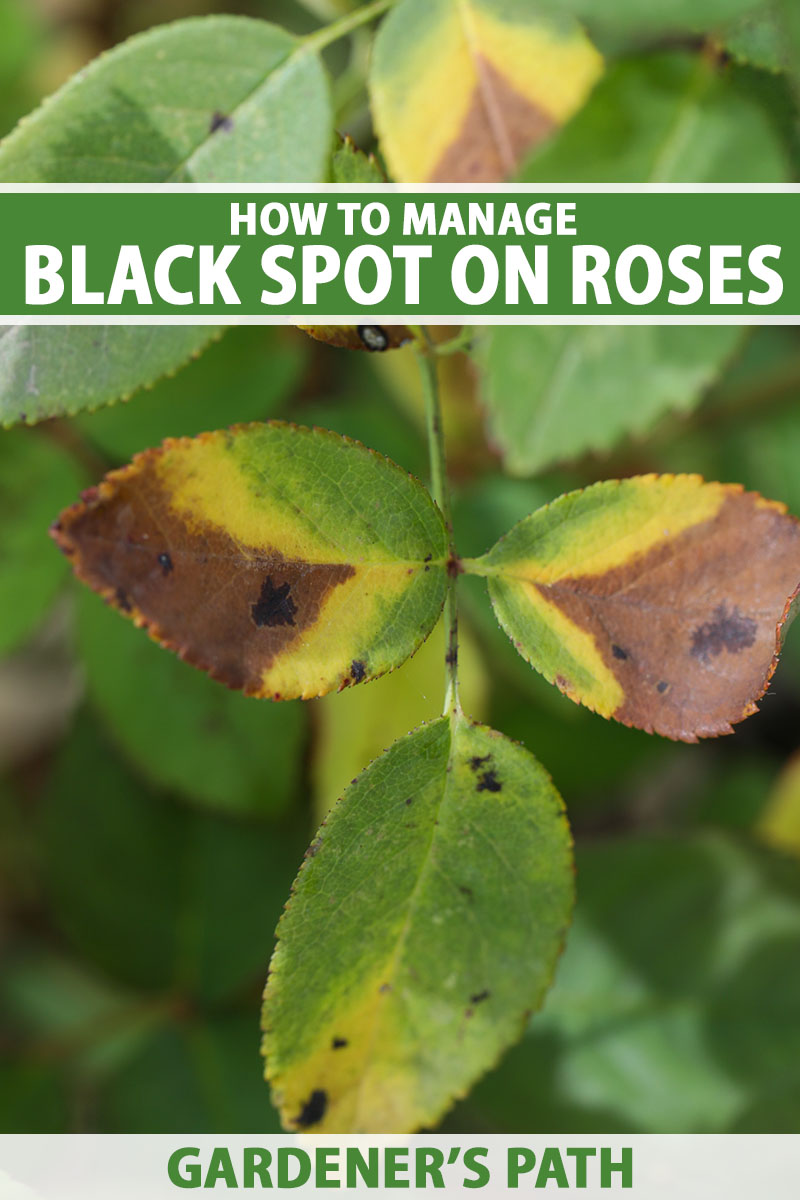
We link to vendors to help you find relevant products. If you buy from one of our links, we may earn a commission.
Beyond the characteristic purple-black spots on the leaves, the fungus known as Diplocarpon rosae can also cause the foliage to drop.
In warm, humid places like Great Britain and the Pacific Northwest, it has caused a serious decline in the health of many rose gardens.
It’s so bad sometimes that certain gardeners have given up on roses.
I can’t tell you how many people I know who have pulled their roses or decided not to plant them because they don’t want to have to tangle with black spot.
It’s a no-good, very bad disease. Here’s what we’re going to talk about to help you deal with it:
What You’ll Learn
Rose growers know that black spot is bad news. It’s one of the most destructive diseases out there. But it doesn’t have to ruin your day.
What Is Black Spot?
Black spot is a fungal disease caused by the pathogen Diplocarpon rosae.
The fungal spores need warm temperatures and moisture to reproduce and spread. Wet spring and fall weather is just the thing, particularly when the temperatures are between 75 and 85°F.

As conditions change to become less favorable for the fungus in the summer, your plant might recover, but don’t be fooled.
The disease will come back in the fall unless you take steps to get rid of it.
Black spot probably won’t kill your plant, but it might make you want to step in and finish the job. Plants will be sparse, sickly, and they won’t bloom well when the infection is severe.
You can see why people decide to rip the roses out of their gardens when this problem has been lingering for a while.
Symptoms
Black spot looks a lot like what you’d expect from the name. It most commonly causes purple or black round patches on the upper surface of leaves.

The spots can be as tiny as a pinhead or as large as a dime. The edges of each spot are feathered and they may develop yellow margins.
An affected leaf will sometimes turn yellow or brown, but not always. Regardless, infected leaves might fall off the plant.
The stems don’t escape unscathed, either. They might form black scabs. The fungus hides in these scabs during the winter.
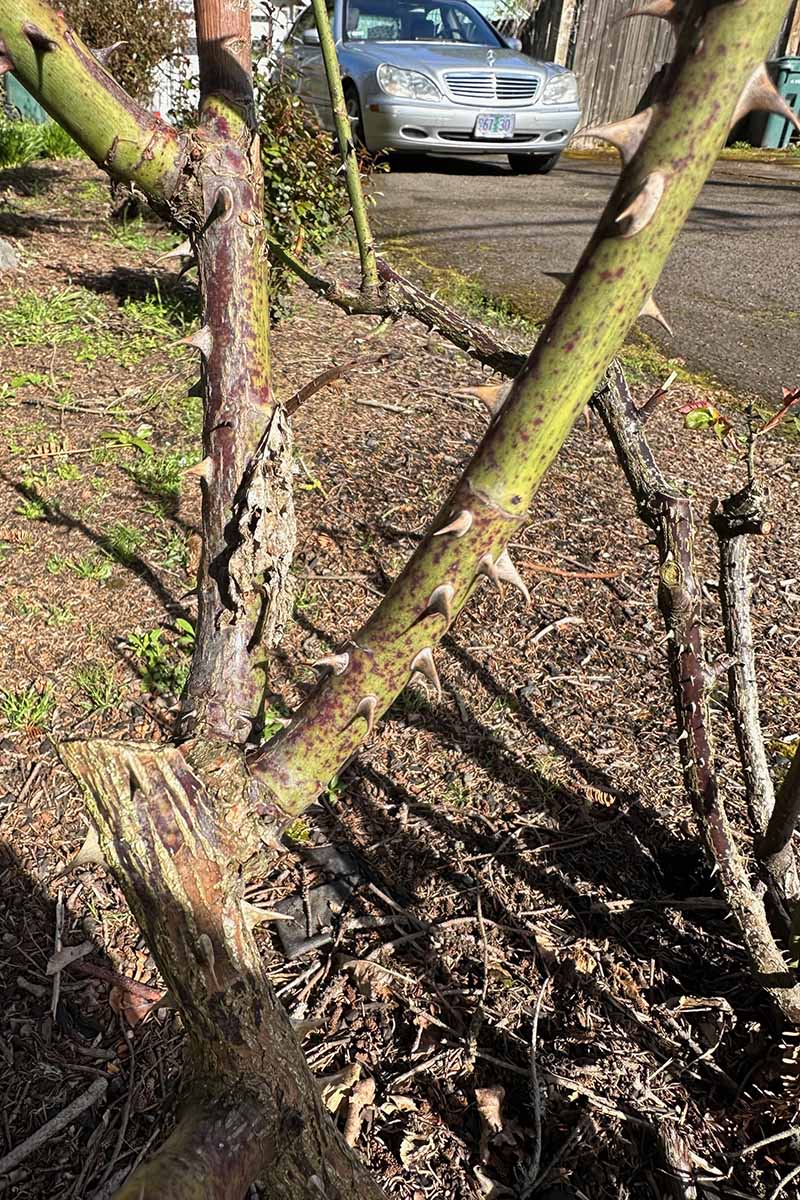
When a plant is heavily infected, all of the leaves might fall off. Without leaves, the plant can’t create energy stores, and that means slower growth and reduced flowering.
It’s this reduction in the plant’s ability to photosynthesize that causes much of the stunted growth and impacts flowering.
Prevention
Remember how the spores need moisture to spread? You can help prevent the disease from moving around by reducing moisture.
That means watering in the morning so any splashes can dry quickly and watering at the soil level rather than on the foliage.

This also highlights why it’s important to situate plants well, with full sun and without crowding.
Crowded plants dry more slowly and hold onto water longer, giving the fungus more chances to reproduce and spread.
The fungus that causes this disease overwinters in plant debris like fallen leaves and pruned stems. That’s why cleaning up your garden bed in the fall is crucial.
And planting in the right place is just as important. We have a whole guide to help you figure out exactly where to plant your roses.
But essentially, you want to choose a spot with full sun exposure, particularly morning sun, and good air circulation.
Control
Before we talk about control, be aware that you can’t cure infected leaves and stems. Control involves preventing any future spread so that new leaves will be disease-free.
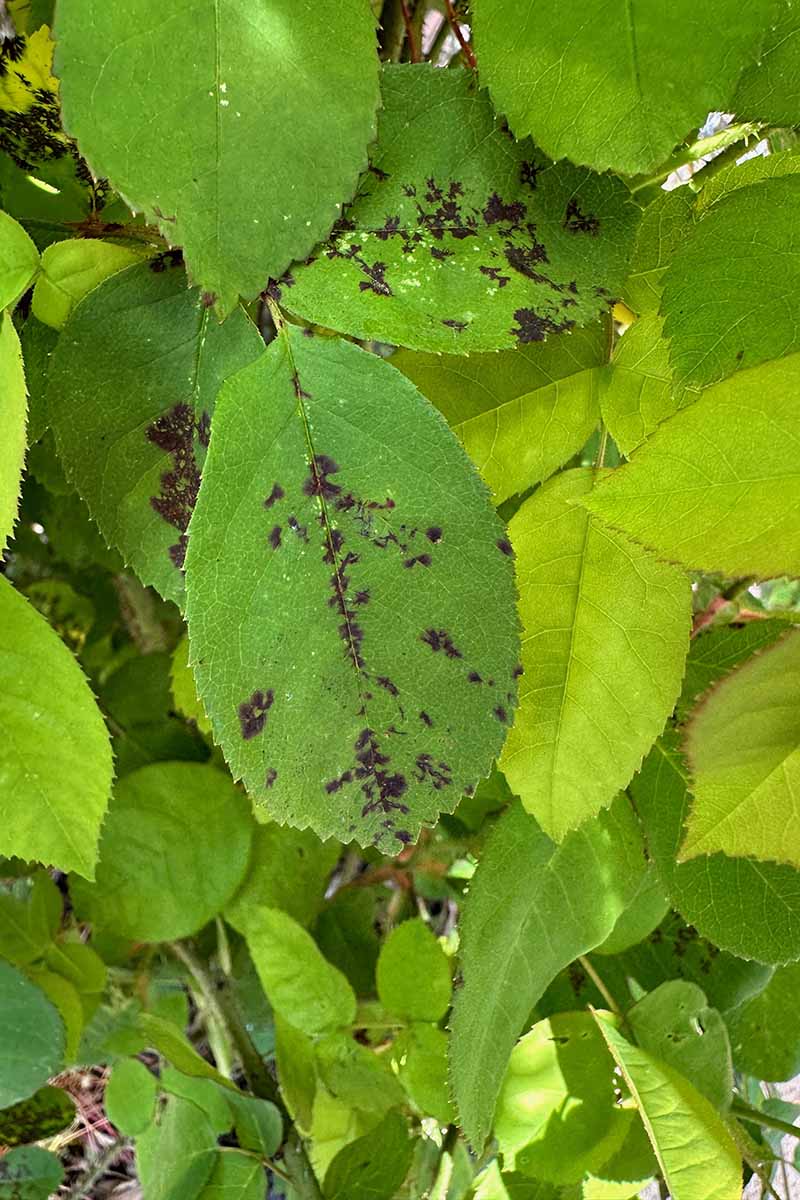
Part of what makes black spot so awful is that the fungus that causes it is genetically diverse, and it’s constantly evolving. It rapidly changes to evade fungicide use and to invade resistant cultivars.
Prevention and judicious pruning are your best lines of attack, because the use of fungicides often just creates resistance.
Control starts the moment you realize the disease is present, and the faster you act, the better off your plants will be.
Prune off every symptomatic leaf and stem. Then, keep on pruning your rose to improve air circulation. Remove all but five of the healthiest canes on shrub roses.
Be sure to use clean and sanitized tools, and do not move from plant to plant without cleaning them well, to prevent further spread.
Rake up all of the leaves on the ground in the fall or winter.
At this point, do another round to check your plants and see if any new symptomatic leaves and stems have developed. Pluck or cut off any infected leaves and stems that you find.
This won’t prevent the disease from returning next year, but it will limit the progression.
If you opt to use chemicals, rotate them and try to limit their use, or you’ll just breed resistant black spot fungi in your garden.
My routine involves spraying my plants with copper fungicide first thing in the late winter in USDA Growing Zone 8. Spray in early spring in cooler Zones.
Liquid Copper Fungicide is available from Bonide via Arbico Organics.
Once the leaves have fully emerged and flower buds are forming, I spray with a product that contains mancozeb, or Bacillus amyloliquefaciens strain D747.
Bonide’s Revitalize contains this beneficial bacterium that has a well-earned reputation for battling bad fungi.
Arbico Organics carries it in 32-ounce ready-to-use bottles or a 16-ounce concentrate.
Then, in the late summer, I do a treatment with sulfur.
You can nab a bottle of Bonide Sulfur Fungicide at Arbico Organics in a one-pound bottle or four-pound bag.
Finally, in the fall, I treat with copper again as the plants are going dormant. If it rains heavily, I will reapply whichever treatment I most recently used.
As you can tell, it’s a keep-’em-guessing type of strategy. You don’t have to follow this exact routine.
You could use sulfur first, copper next, and mancozeb or a biofungicide after that. The order doesn’t really matter.
You can also mix in a product that contains captan, ferbam, maneb, or triforine.
I try to use products that are a bit easier on the environment than these are, and I don’t find that these chemical-based products are any more effective. But it’s your garden, so it’s your choice.
When I stay on top of things, this routine keeps my plants mostly symptom free, which is quite an accomplishment where I live since black spot thrives here.
However, if I don’t stay on top of the routine, I find I need to implement a more intense system for a year to get things back under control.
That involves the same process of alternating treatments, but instead of applying four treatments per growing season, I reapply whichever product I’m using every two weeks for a total of six weeks before I switch to the next product.
Then, the following year, I can return to less frequent applications.
Remember, you’re trying to find a balance between killing the fungus and creating a resistant superfungus.
If you’re using a more frequent routine, back off a little if it’s looking like the disease is coming under control. Maybe treat once a month unless symptoms return.
Plant Resistant Roses
Rose breeders are working hard to come up with cultivars and hybrids that can withstand black spot, and whoever comes up with one that is completely immune will find themselves incredibly wealthy and respected.

As it stands right now, as new resistant cultivars come onto the market, the disease evolves to overcome that resistance.
It sucks, right?
If you’re hoping to avoid the problem, don’t plant hybrid teas, floribundas, or climbing cultivars, in general. They’re extremely susceptible. Yellow and copper-flowered types are also more susceptible.
Strangely, since they’re often more susceptible to diseases, Old Garden roses like noisettes, damasks, and China roses might contract the disease, but it rarely progresses far. Shrub roses are also resistant, and rugosa roses are practically immune.
If you have your heart set on a floribunda, climber, or hybrid tea, here are some excellent resistant cultivars – at least, for now:
‘All That Jazz’ is a floribunda with bright orange blossoms and a heady damask scent.
‘Angel Face’ has fully double medium pink blossoms.
It’s a floribunda and tea hybrid that has won piles of awards. Nature Hills Nursery carries ‘Angel Face’ in #3 containers.
‘Anytime’ has pinky-orange semi-double flowers. It’s a hybrid of ‘New Penny’ and ‘Elizabeth of Glamis.
‘Carefree Delight’ is a semi-double shrub rose with clusters of cream and pink flowers.
‘Cayenne’ is a floribunda bred by noted breeder Kordes. It has fiery orange-red, double blossoms.
‘Charlotte Anne’ is a thornless floribunda with pale lavender semi-double flowers.
‘Distant Drums’ is my personal favorite because of its stunning bronze inner petals cupped with lavender pink petals on the outside of the blossom.
It was bred by Griffith Buck, who is known for his disease-resistant and cold-tolerant plants. My two plants are the few in my yard without the disease.
‘Eden’ is a Meilland-bred climbing rose with fully double, deeply cupped pink flowers.
‘Elizabeth Taylor’ has vibrant pink, double flowers. This hybrid tea has a spicy fragrance.
‘Granada’ is a highly fragrant hybrid tea featuring large, distinctive flowers. They have medium pink flowers with dark pink edges on the outside of the blossom. On the inside are golden pink petals.
‘Lady X’ is a hybrid tea beloved for its mauve-purple double flowers.
‘Livin’ Easy’ lives up to its name, needing little care to thrive. It’s a floribunda with large, coral-colored blossoms.
‘Marilyn Monroe’ has apricot-colored petals on a hybrid tea plant. The fully double blossoms are mildly fragrant.
‘Mikado’ is popular across North America. This hybrid tea has orange-red blossoms.
‘Mister Lincoln’ is exceptionally popular and it serves as the rootstock for many, many grafted roses.
It’s a hybrid tea with deep, dark purple-red roses. Bring Mr. Lincoln home from Nature Hills Nursery in a #2 container.
‘Pascali’ features bright white blossoms on a vigorous hybrid tea shrub.
‘Peace’ is the rose that started it all for Meilland International. The yellow, cream, and raspberry pink blossoms are instantly recognizable on this hybrid tea.
‘Princess of Monaco’ is a hybrid tea bred by Meilland with pink and cream petals edged in raspberry pink.
‘Ramblin’ Red’ is one of the few resistant climbers, and I can attest to its ability to avoid black spot infection. Along with ‘Distant Drums,’ it’s the only other rose to escape the disease in my garden.
The bright, double flowers are striking. Grab this beauty in a #3 container at Nature Hills Nursery.
‘Simplicity’ is a floribunda that received its name for its easygoing nature. The pale and medium pink blossoms are faintly rose-scented.
‘Sunspire’ has gorgeous golden-yellow double flowers that are intensely fragrant. It’s a floribunda.
‘Voodoo’ is a hybrid tea with scarlet flowers that gradually transition to orange as they age.
‘Wanderin’ Wind’ is a shrub rose blanketed in double pink flowers, and it’s a vigorous grower that will continue to bloom all summer.
‘Winchester Cathedral’ is a David Austin sport of ‘Mary,’ featuring double white blossoms that will fade to pale pink. The blossoms have a sweet fragrance.
Look-Alike Diseases
Chances are good that if there are black spots on your roses, it’s black spot disease. It’s that common. But there are a few other diseases that can cause leaf spotting.
For instance, downy mildew results in spots that can be dark when they’re young, eventually expanding and forming a gray or tan center.
Look for the purplish spores on the underside of the leaves. If it’s present, you know you’re dealing with downy mildew.
Canker causes dark spots on the canes and stems, but not the leaves. Rust can also cause dark spots, but you’ll see orange fungus on the undersides of the leaves.
Cercospora causes black spots with a tan center.
To make things more confusing, black spot might be present along with these diseases.
Out, Darn Spots
I hope you came to this guide out of sheer curiosity and not necessity. But if you came here because your plants have the dreaded black spot, just know that all isn’t lost.
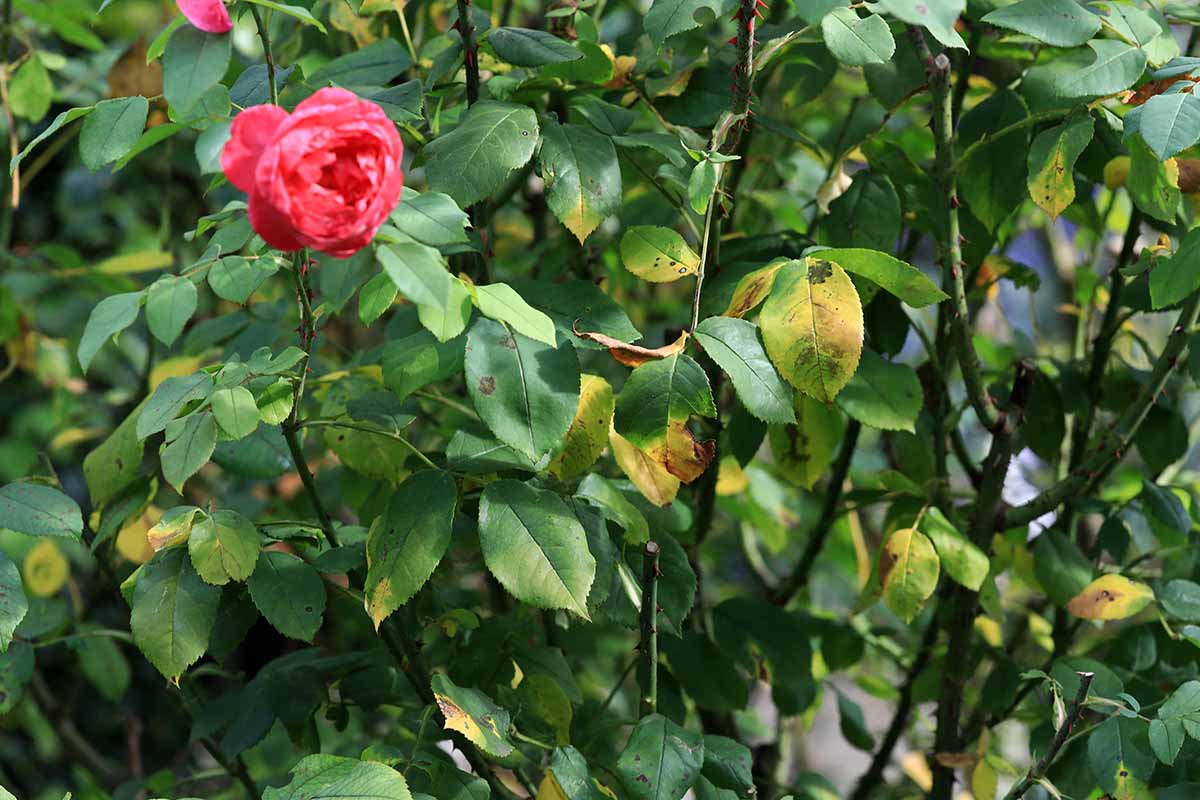
It takes some work, and your plants might never be 100 percent symptom-free, but you can still enjoy your beautiful roses. Sometimes it’s about accepting good enough rather than demanding perfection.
Which roses are you growing? Are you dealing with black spot? Tell us about it in the comments, we’re always here to help.
And as you continue on your rose-growing journey, consider using these guides to help you along:
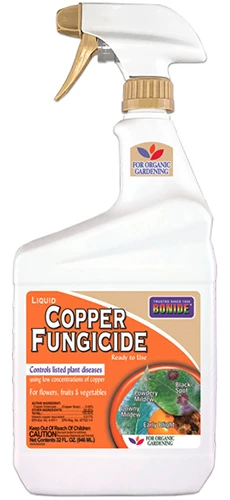
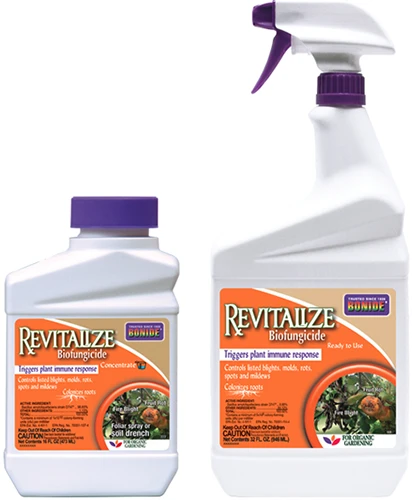


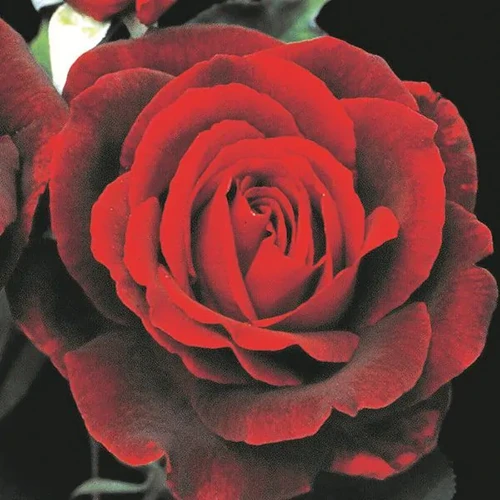
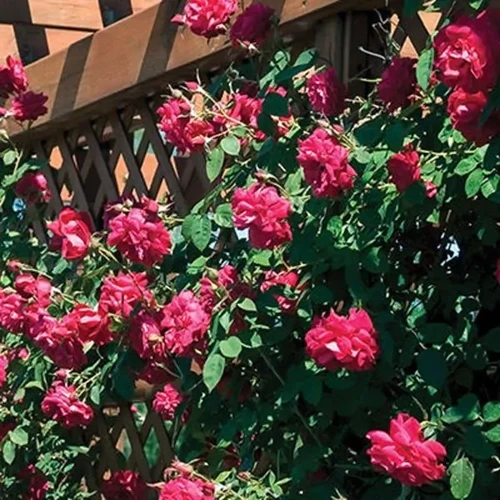
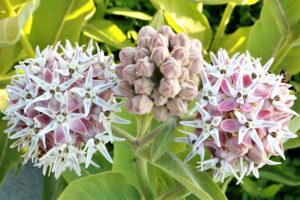


Wonderful article thanks
Thanks for the kind words. So glad we could help!